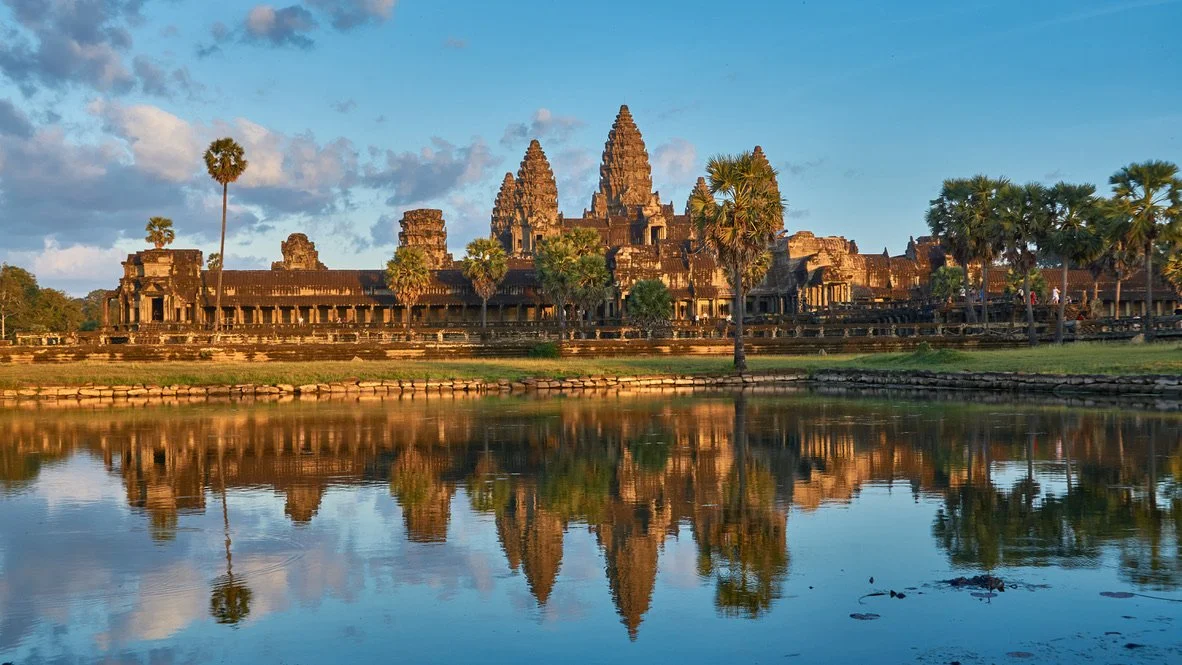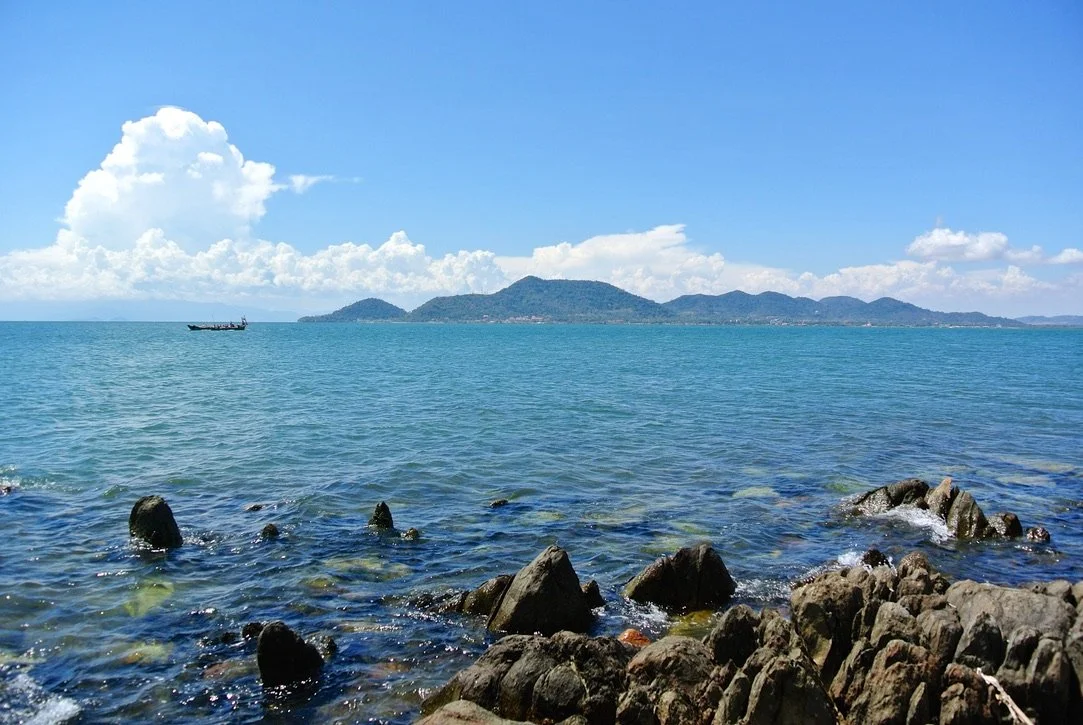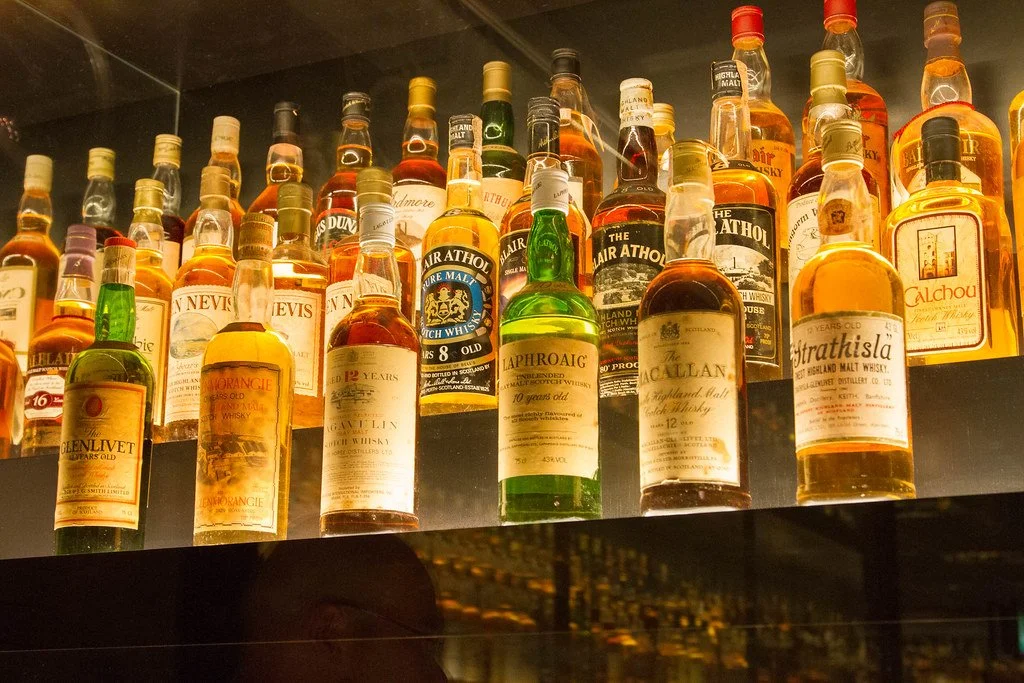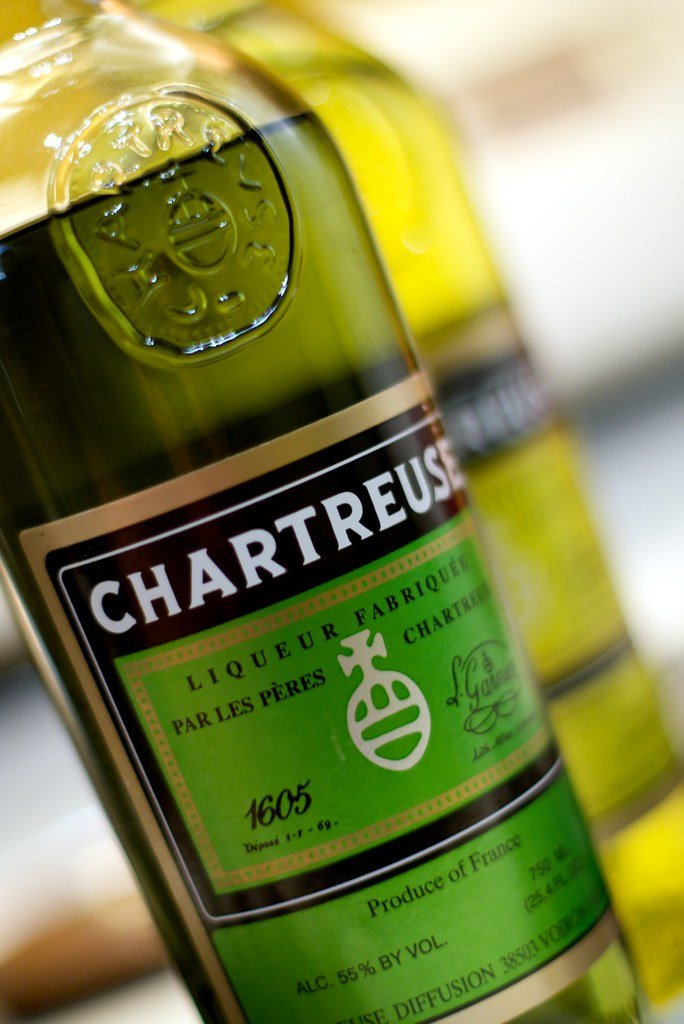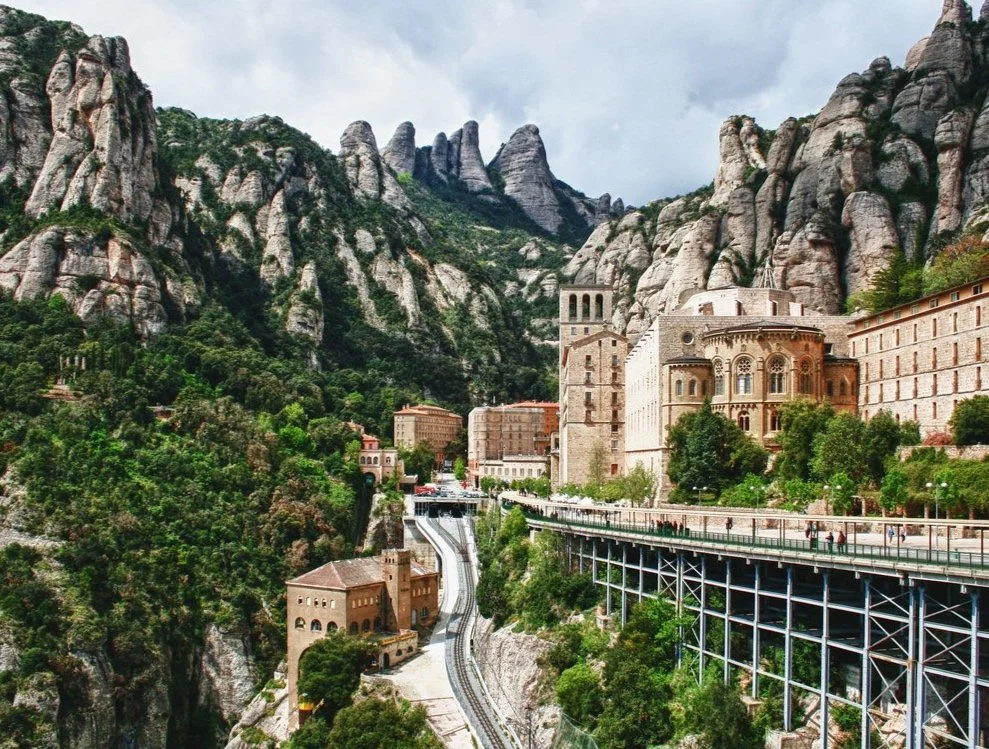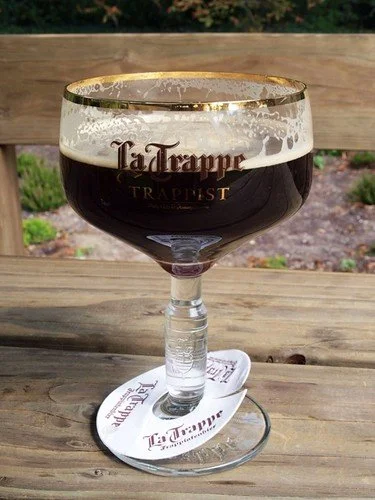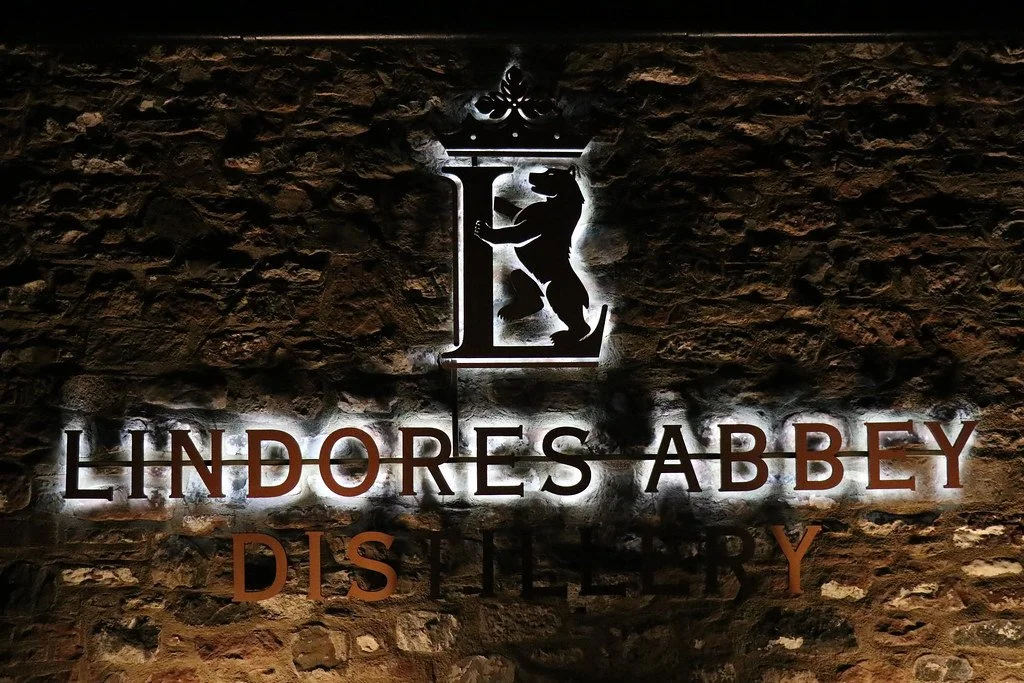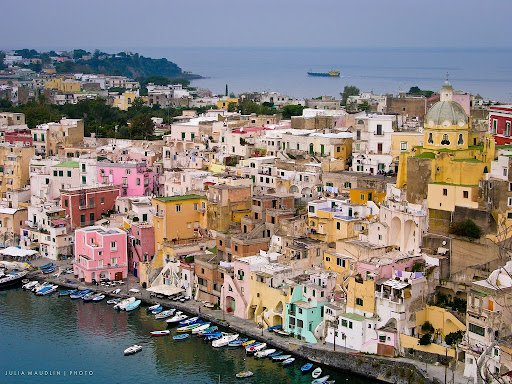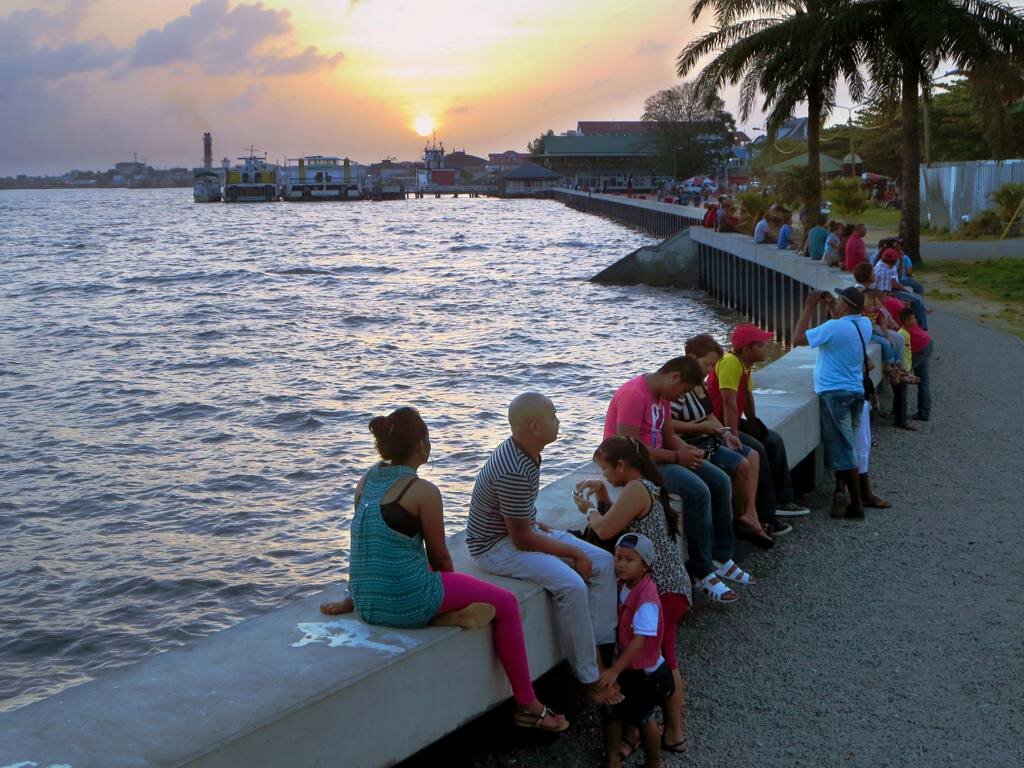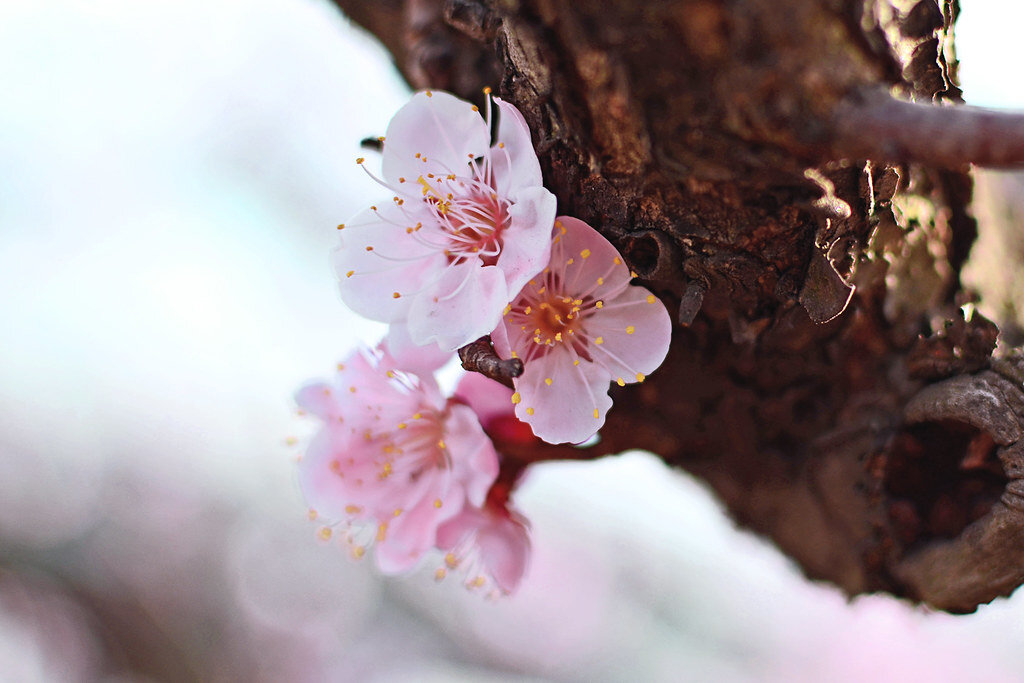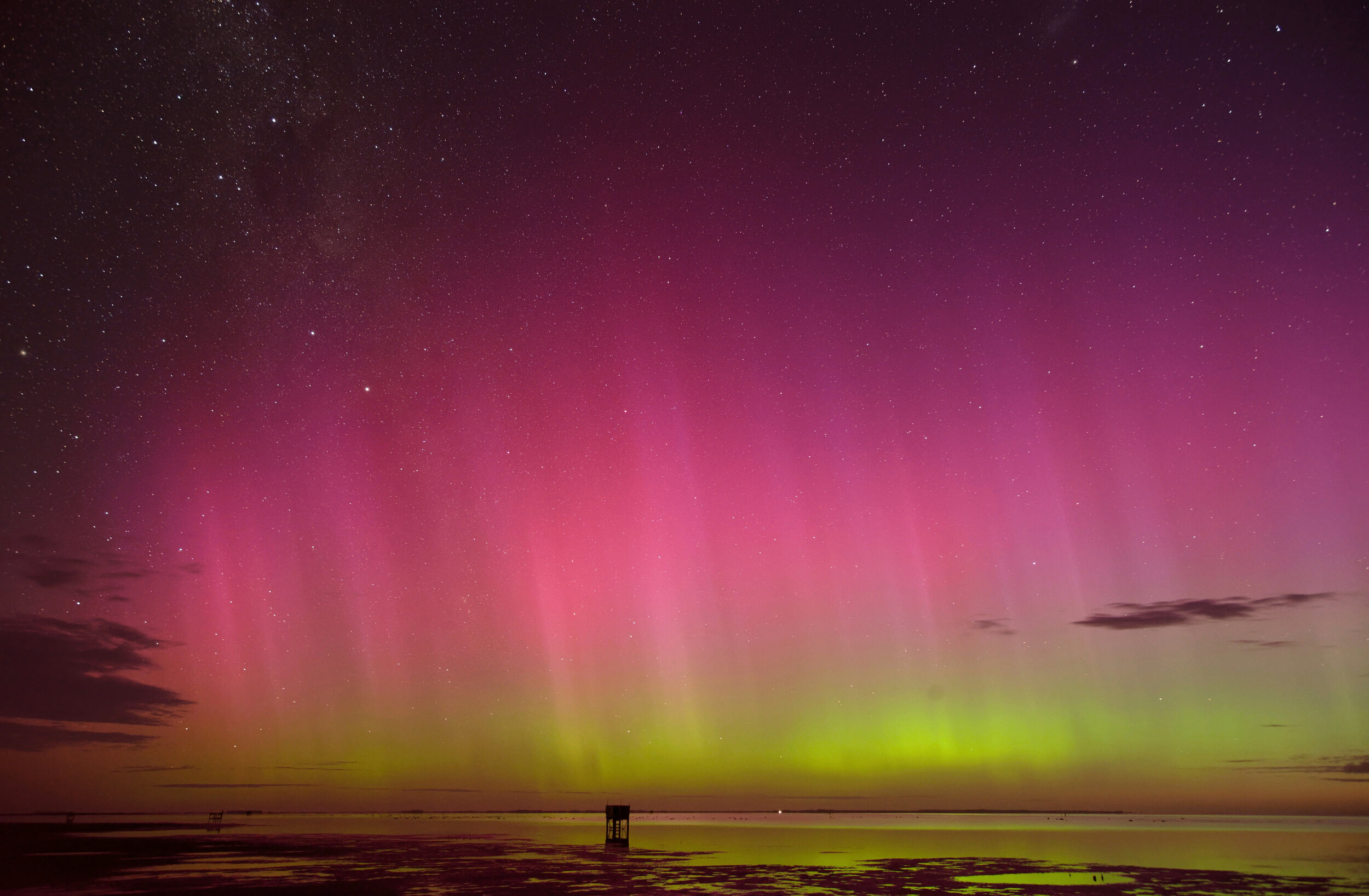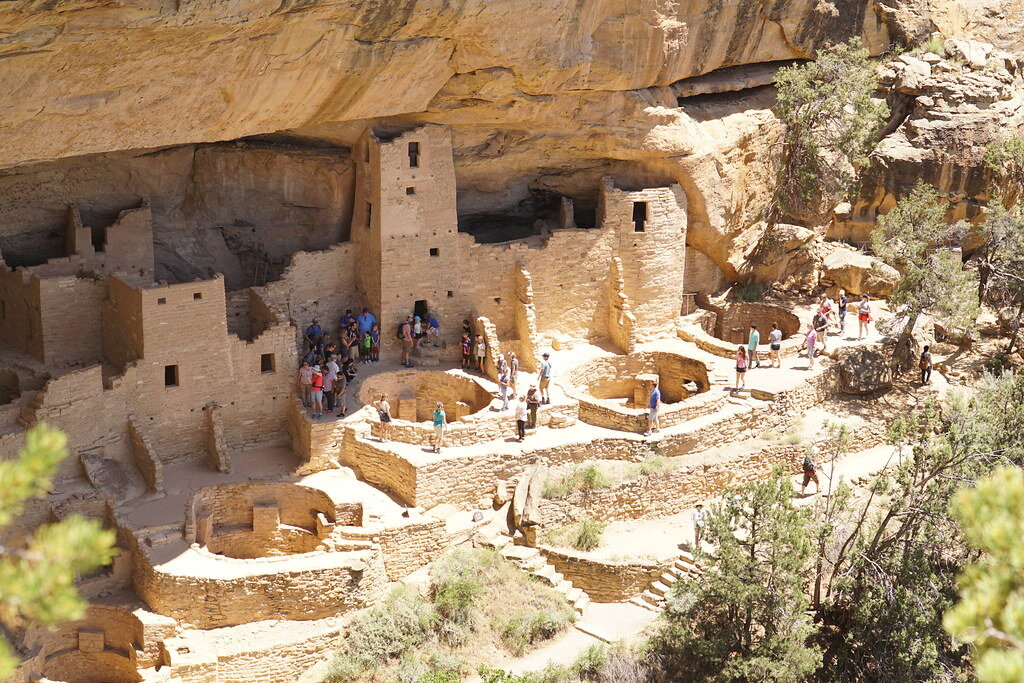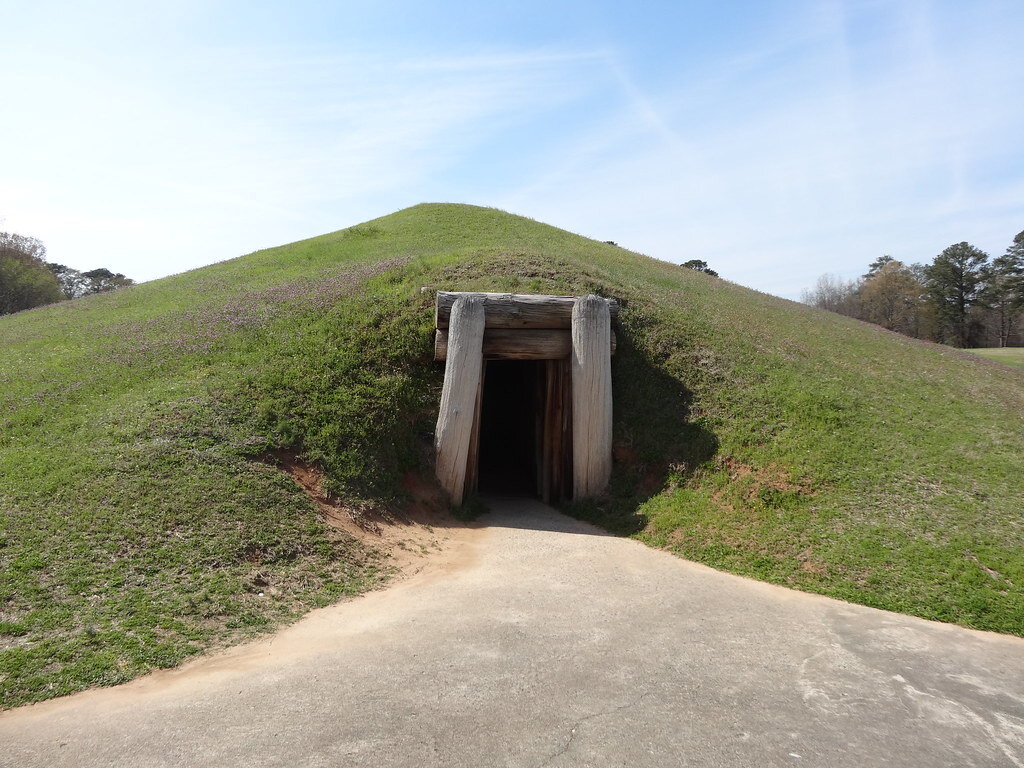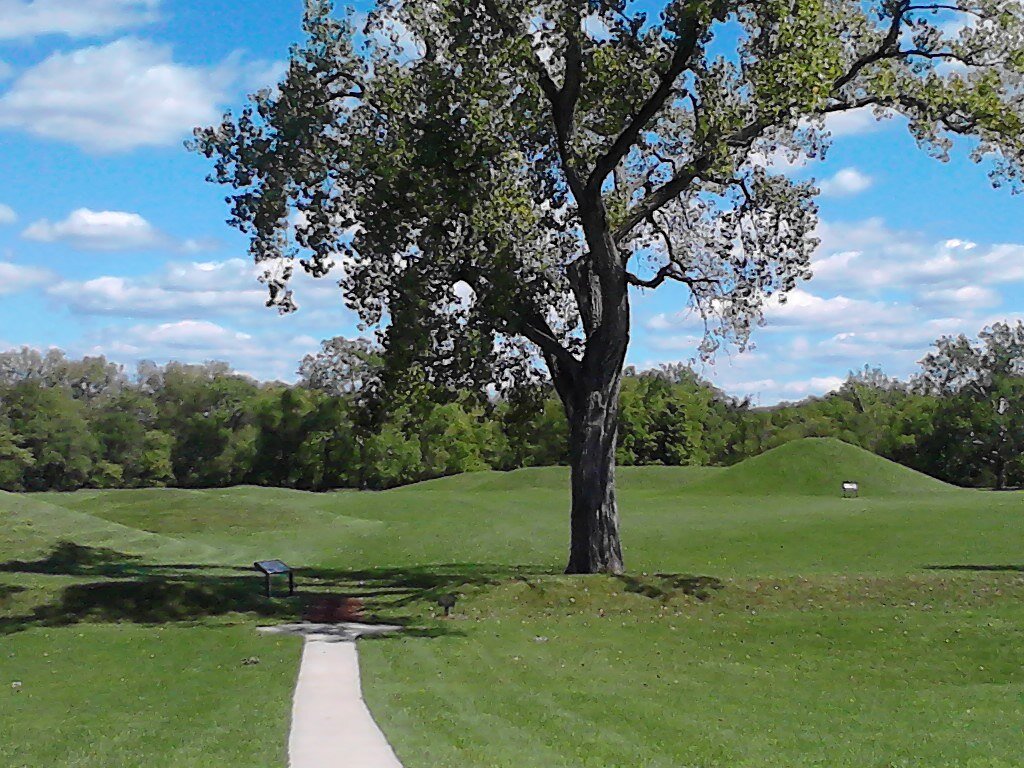From the Rainbow Mountains of Peru to the Kawah Ijen Volcano in Indonesia, discover these six most colorful natural wonders of the world in Iran, Mexico, China and more.
Read MoreThe Islands of Hong Kong: Hidden Oases Next to a Bustling City
Hong Kong is known as an urban center, but just a short ferry ride away from downtown are traditional fishing villages and untamed beaches waiting to be explored.
Tai O village, sometimes called the Venice of the Orient. Christian Junker | Photography. CC BY-NC-ND 2.0.
Hong Kong is a city of contrasts. It is where crowded slums stand next to glimmering skyscrapers, where its British legacy endures proudly with its Eastern roots, where poverty lives alongside some of the greatest riches in the world. It is also one of the most densely populated cities, with a population density of 17,311 people per square mile, packed inside a small urban center surrounded by mountains and outlying islands.
But right outside the hustle of businesspeople lies a different side of Hong Kong. In some of the outer islands, just 10 away from Central, people live simple lives, sustaining themselves by fishing. Other islands are completely free of development and offer secluded beaches. These islands are part of the New Territories, which is included in the land that make up Hong Kong but have been largely free of development until recently. Nevertheless, it is possible to seek solitude just a short ferry ride away from the heart of Hong Kong, whether it is for a unique cultural experience or for a thrilling outdoor adventure.
Lantau Island
The Big Buddha statue, located in the interior of Lantau Island. Harald Felgner. CC BY-NC-SA 2.0.
While Lantau Island, the largest in the special administrative region, is the location of the city’s airport and has some development on its northern side, the interior and southern side of the island holds quaint villages and massive religious monuments. In the interior of the island, one can find the Po Lin Monastery, a Buddhist monastery established in 1906, and the Big Buddha statue, a massive bronze sculpture of the Buddha completed in 1993. Taking inspiration from ancient Buddhist art forms, these sites offer a great opportunity to learn about the religion’s tradition. These sites are accessible via the Ngong Ping 360 cable car, which takes riders up the mountains from a commercial center near the airport.
On the western coast of Lantau Island lies the village of Tai O, a fishing village partially built on stilts over the water. The villagers there hold on to their traditional way of life, resisting the integration of their lives into modern Hong Kong society. Visitors to the village can experience an authentic fishing village unaffected by the hustle of modern society. Besides trying out the local cuisine, visitors can also take a boat tour to try to spot the endangered Chinese white dolphin.
Cheung Chau Island
Tung Wan beach. Lewi Hirvela. CC BY-NC-SA 2.0.
A 45-minute ferry ride from Central, Cheung Chau Island offers an adventure for all types of travelers. The island has a long history, being inhabited since prehistoric times. Ancient rock carvings left on the island by its earliest inhabitants have been declared as a monument of Hong Kong. In the 18th century, the island was the site of a pirate hideout. Today, the Cheung Po Tsai cave, where some booty of the pirate of the same name has been hidden, is open to the public to explore.
For those who prefer chilling on the beach, there are two public beaches on the island. Tung Wan beach, located at the heart of the island by the main village, offers soft sand, showers and changing rooms, concession stands, and all the amenities of conventional beach. The other beach, Kwun Yam, is a bit more out-of-the-way, with a smaller swimming area and coarser sand. However, it is the windsurfer’s paradise and was the training ground for Olympic windsurfing champion Lee Lai-Shan, who earned Hong Kong’s first gold medal in the 1996 Atlanta games.
Lamma Island
The floating fish farm rafts of Lamma Island. Trey Ratcliffe. CC BY-NC-SA 2.0.
More laid back than Lantau and Cheung Chau, Lamma Island offers an idyllic landscape. There is an extensive network of paths that takes visitors to a variety of sites around the island, from Hung Shing Yeh beach to the Tin Hau temple. That temple is a prime example of the East-meets-West theme seen throughout Hong Kong; the otherwise Eastern-style temple is guarded by two statues of Western-style lions.
At the Sok Kwu Wan village, visitors can learn about the island’s fishing tradition. The Lamma Fisherfolks’ Village showcases the local fishing culture and history in Hong Kong for visitors. Floating fish farm rafts are spread out across the bay. A trip to Lamma cannot be completed without eating at one of the local restaurants, which serve freshly caught seafood from the island’s waters.
Po Toi and Tung Ping Chau Islands
The rocky coastline of Po Toi Island. Eddie Yip. CC BY-SA 2.0.
These two islands are for the more adventurous types of travelers. They are free from development. Po Toi, the southernmost of Hong Kong’s islands, is completely off the electrical grid, with its few buildings getting electricity from a small generator. This rocky island has many hiking trails, including one to Nam Kok Tsui, the southernmost point in Hong Kong. For the more brave, Mo’s Old House, an abandoned mansion built in the 1930s, is said to be haunted.
Similarly, Tung Ping Chau island, in the remote far-northeast corner of the special administrative region, is also undeveloped. Unlike the rest of Hong Kong, it is composed of shale, resulting in an interesting geologic pattern. While the east side of the island has a sandy beach used for diving, the main focus of the island is its unique rock formations. The special geologic formations have made it a place of scientific interest. Today, it is a part of the UNESCO Global Geoparks network.
Bryan Fok
Bryan is currently a History and Global Affairs major at the University of Notre Dame. He aims to apply the notion of Integral Human Development as a framework for analyzing global issues. He enjoys hiking and visiting national parks.
Discover Cambodia’s Beauty Despite Dark Political Past
Though still recovering from Pol Pot’s regime, Cambodia contains numerous sites and monuments worth traveling for.
Angkor Wat Reflection. Radek Kucharski. CC BY2.0.
Cambodia is known for its massive and brilliantly crafted religious temples, vast untouched forests and vibrant city life. What some may not know is Cambodians have and are still recovering socially, economically and politically from one of recent history's most horrific events: the reign of the Khmer Rouge.
Under the rule of dictator Pol Pot, the Khmer Rouge was a Marxist regime created in 1975. Whether from execution, starvation, exhaustion and disease, more than 2 million civilians died during the genocide. Despite the defeat of the Khmer Rouge on January 7, 1979 by the Vietnamese military, Cambodians struggled to regain their political and economic prosperity. General poverty rates have lingered around 35% which is a great improvement from the 50% at the initial end of the events. Those who experienced the genocide are now be in their 50s, and thus Cambodians are still living with the traumatic experiences they went through.
With that said, the Southeast Asian country has shown great perseverance and progress towards a bright future. Now, Cambodian citizens celebrate their traditional cultures and welcome outsiders to experience the atmosphere and history of their country. Here are a few of the most popular spots.
1. Angkor Wat
Said to be the largest religious monument in the world, Angkor Wat is a vast Buddhist temple that touches over 400 acres of land and comprises over 1,000 buildings. Cambodia is home to this cultural wonder of the world and is a destination that provides both visual beauty and an introduction to Cambodia’s rich history and culture.
Angkor Wat has five lotus-like towers rising 65 meters up, being the first part of the temple visitors tend to notice. The awe-inspiring scenery continues with carvings throughout the inside of the temple. Celestial dancers, known as apsaras in Khmer (Cambodia’s national language), helped reintroduce Apsara dance in Cambodia. Carvings of war, spiritual journeys and everyday life explain Cambodia’s hardships and relationship with culture and religion. Ta Prohm, also known as the Tomb Raider Temple due to its appearance in the 2001 film, and Angkor Thom are other beautifully architected sights nearAngkor Wat.
2. Banteay Srei
Banteay in Angkor. Juan Antonio Segal. CC BY 2.0.
Known as the Temple of the Women, Banteay Srei is sacred in Angkor. Though it is much smaller in size than Angkor Wat, it contains some of Cambodia's most delicate carvings. Images of women holding lotus flowers and memorable stories of the Hindu religion are depicted here. Banteay Srei is still a place for women to visit and observe to feel inspired and appreciated, as well as a place where anyone can experience its beauty and history.
3. Bayon
Bayon Temple Ruins in Cambodia. Uwe Schwarzbach. CC BY-NC-SA 2.0.
This Buddhist Temple is home to 216 smiling, peaceful faces carved into towers. Numerous other carvings can be seen representing the experiences of the Khmer people. Bayon temple allows visitors to understand the goals and journey of the Khmer Empire and is a great temple to visit if you are interested in Buddhism and appreciating Cambodia’s past.
4. Phnom Penh
Bustling Phnom Penh. Baron Reznik. CC BY-NC-SA 2.0.
Phnom Penh is the capital of Cambodia andhome to vibrantly colored buildings, tight streets with motorbikes, friendly locals and more architectural beauty. A main mark of the Cambodian experience, Phnom Penh is affordable and easy-going—a great way to submerge yourself in the country's culture. here are some upscale restaurants and locations, but overall, Phnom Penh remains its gritty, lively and romantically chaotic self.
5. Krong Siem Reap
Angkor Wat in Krong Siem Reap. Kim Seng. CC BY-NC-ND 2.0.
Krong Siem Reap is another other major city destination in Cambodia. Krong Siem Reap is a staple of Cambodia’s religious history, being home to Angkor Wat, the ruins of Banteay Srei and Ta Prohm. Locals treat travelers as if they have been life-long friends, and travelers will get the chance to explore much of Cambodia’s Buddhist history as long as remaining respectful.
Krong Siem Reap is also known for its exquisite food scene. Cafes offer coffee, teas and delicious local food dishes with some even offering vegetarian and vegan-friendly options. Restaurants to grab an authentic and budgeted meal are around every corner.
6. Kirirom National Park
Kirirom National Park Rest Area. Arie. CC BY2.0.
Located mostly in Phnom Sruoch District, Kirirom National Park is covered with deep forestry and high elevation. Kirirom, meaning “Mountain of Joy,” is loved for its high elevation pine forests and many glistening waterfalls. Along with vast, isolated hiking trails, the endangered sun bears, pileated gibbons and tigers can be found living in the forests.
7. Koh Tonsay
Located on the country's south coast in the Gulf of Thailand, Koh Tonsay can be translated as “Rabbit Island” and received its name because it houses the furry little creatures. It is a relatively quiet coast with a more rustic beach style. While tourists tend to visit other parts of the Cambodian coast more influenced by Chinese businesses, Koh Tonsay remains a sliver of true Cambodian land. It is not as flashy as some other beaches on the coast of Cambodia, but Koh Tonsay offers a unique and isolated beach experience.
8. Bousra Waterfall
Bousra Waterfall. Lucien Tan. CC BY-ND 2.0.
Located just outside of Sen Monorom, the Bousra (also spelled Bou Sra and Busra) waterfall is a three-level natural wonder offering viewing platforms at different heights and access to its base, where visitors can get misted and explore the powerful waters.
Haleigh Kierman
Haleigh is a student at The University of Massachusetts, Amherst. A double Journalism and Communications major with a minor in Anthropology, she is initially from Guam, but lived in a small, rural town outside of Boston most of her life. Travel and social action journalism are her two passions and she is appreciative to live in a time where writers voices are more important than ever.
VIDEO: Journey Through Thailand
This footage of Thailand serves as the second installment in Vincent Urban’s series: “In Asia.” The video features glimpses into the vibrant streets of Bangkok and the natural scenery of Northern Thailand. He also features footage from the small but lively town of Pai, located near a mountain base in Northern Thailand. The director includes evocative imagery of Buddhist temples from his visit to the city of Chiang Mai, capital of Chiang Mai province. German director Vincent Urban, based in New York City, concludes the episode teasing his next stop, Laos, for the following installment of the series.
5 Alcoholic Drinks Made By European Monks
Catholic monks throughout Europe make and sell liquors, beers and wines to travelers, using recipes they have cultivated and perfected over centuries.
Different types of Scotch Whisky. Jaygoldman. CC BY-NC-SA 2.0.
Some of the world's major religions prohibit or dissuade their followers from consuming alcohol. Usually, the disapproval of the substance comes from the idea that alcohol consumption leads to addiction, loss of wisdom and more negative outcomes. Buddhist monks condemn alcohol and its consumption. The Quran, the holy text of Islam, prohibits it. Hinduism does not use alcohol in religious contexts but social drinking varies from person to person. But the Catholic faith is inherently linked to the consumption and creation of alcohol.
Jesus’s first miracle was turning water into wine. Wine was biblically said to “gladden the heart of men (Psalm 104:15)” and was consumed for celebrations. Alcohol also takes a central place in many important practices of the Catholic faith; in taking communion, church goers have a sip of wine. Still to this day, Catholic monks across Europe emphasize the importance of alcohol in their faith by continuing the tradition of making it at monasteries and abbeys. However, the alcohol monks make is not typically for sacramental use, but rather commercial sale and consumption. Travelers from across the globe can taste the different liquors, beers and wines made by Catholic monks, each drink having a unique link back to the faith and history as a whole.
1. Chartreuse
Chartreuse Liquor. Jeremy Brooks. CC BY-NC 2.0.
Chartreuse is a French liquor made by the Carthusian monks for more than 200 years. Originally, the liquor was intended to have medicinal properties that extended life spans, but the liquor’s taste popularized it for regular consumption. The liquor’s recipe was given to them by François-Annibal d’Estrées, a French diplomat and soldier, who was closely affiliated with the Catholic Church. The liquor is still made at the monastery located in the Chartreuse Mountains in southeastern France.
Chartreuse is an herbally infused alcohol and is available in both green and yellow colorings. The infused spices leave distinct flavors in the alcohol; herbs like mint, sage and vanilla boldly come through when consumed. Both Green Chartreuse and Yellow Chartreuse vary in flavor, the Green having a strong, almost spicy flavor due to the 130 herbs used to distill it. Yellow Chartreuse is milder and lower in alcohol content, which gives it a sweeter taste when compared to its Green counterpart.
The monks of Grande Chartreuse monastery sell the liquor they make themselves from the distillery they have in Aiguenoire, France, and also from their website. The monks are the only ones who know the real recipe for Chartreuse liquor, making the liquor a coveted asset for craft-cocktail makers. Chartreuse ranges in price, costing anywhere between $50-100, some bottles even exceeding that range.
2. Aromas De Montserrat
The monastery at Montserrat. Bert Kaufmannis. CC BY-SA 2.0.
Aromas de Montserrat is a Spanish herbal wine made by Montserrat Monastery monks. The monastery, located on Montserrat mountain, has been a Catholic practicing monastery for over a century. The monastery is now a place of pilgrimage in Spain, which can be accredited to their possession of the Black Madonna, a statue of the Virgin Mary found in a cave in Montserrat. Known as the patron saint of Catalonia, the Black Madonna brings hundreds of travelers a day to the monastery in the mountains. Besides being a hub for religious history and pilgrimage, the monastery is also known for the wine they make and sell to those who visit.
On the mountain itself, 13 naturally growing spices can be found scattered throughout the foliage. Those who walk or hike the trails of the mountain can smell the rosemary and thyme that clings to the air. Protected by the monastery, and due to its significance as a place of pilgrimage, the only people who have access to the herbs are the monks—visitors are forbidden to pick any spices, and those who do are met with the consequences of heavily enforced conservation laws. However the monks – able to pick the naturally growing spices for their own needs – use the herbs that grow on their mountain to make their famous Spanish wine.
Using 12 of the spices from their land, the monks of Montserrat distill the wine in copper stills, which is then moved into barrels so the liquid can ferment and age properly. Hints of cinnamon, sage, thyme and more can be tasted when enjoying the wine, which is widely sold in Barcelona and the Catalonian region of Spain for around $25. The wine is said to be dry with a spicy—if not overpowering—taste of the herbs used to distill it.
3. Trappist Beer
Trappist Beer. French Disko. CC BY-NC-SA 2.0.
Trappist beer is brewed by Trappist monks, who practice Catholicism in monasteries and abbeys across the globe. Trappist beer is made in 14 different monasteries, most of which are spread across Europe—only one residing in the United States. Other countries with Trappist monasteries include Belgium, the Netherlands, Austria, Italy, England, Spain and France.
The production of trappist beer is regulated by the International Trappist Association (ITA), which connects the many Trappist branches and promotes the sale and production of the beer they make. The ITA lists the specific parameters that must be met in order to brew and sell Trappist beer, and if such criteria is met, the ITA stamps the beer as an Authentic Trappist Product (ATP). Trappist beer must be made within the walls of a Trappist Abbey, monks must conduct all of the production themselves, and the profits may only be used to meet any needs in the community.
Most of the abbeys that make Trappist beer allow tours of the breweries and allow travelers to sample and purchase the beer directly from the monastery. Each monastery produces its own unique beer, so travelers who visit different abbeys may encounter a completely new drinking experience each time.
The taste is described by Home Brew Journals as “malty, bready, sweet, spicy” and is said to come in fruit flavors such as apple, cherry and pear.
4. Aqua Vitae (Scotch Whisky)
Lindores Abbey Distillery sign. Dave Paterson. CC BY 2.0.
Monk Friar John Cor, who coined the term “aqua vitae,” or “water of life,” created what we know today to be Scotch Whisky. Lindores Abbey, the birthplace of Scotch Whisky and where Friar John practiced his devout faith, is still a place where Scotch Whisky is distilled. Although the whisky’s recipe comes from the monks, it is now made by a distillery company. However, Lindores Abbey Distillery, headed by Andrew McKenzie Smith, uses the original recipe for Scotch Whisky to perfect and produce its product, keeping with the monks’ original centuries-old practices.
Lindores, dubbed “the spiritual home of Scotch Whisky,” was the place McKenzie Smith decided to build his new distillery. Smith also plans to use fruit from the abbey’s orchard to flavor the whisky in the future. The liquor is now being sold under the name Lindores Scotch Whisky, an ode to the abbey that housed the creators of the liquor.
Scotch Whisky is described as smooth and silky. It has citrus hints, coupled with fruity undertones and flavors. The aftertaste is said to be smoky and sweet. Travelers can visit the distillery, which is right across the street from the abbey. Travelers can explore this too, but Lindores Abbey is practically ruins now, having not been maintained or used for many years. Those who wish to try the whisky on location can, and those who wish to purchase a bottle of Lindores for themselves can do so for around $50.
5. Buckfast Tonic Wine
Buckfast Bottle on the Street. BinaryApe. CC BY 2.0.
Buckfast tonic wine is produced by monks at Buckfast Abbey in England. The wine is made with caffeine, and The Guardian states “each bottle contains around eight times the caffeine of a can of coke.” The properties of this wine, being 15% alcohol and pumped with caffeine, are said to cause those who drink it to get high rather than drunk. Such effects of Buckfast wine have led to increased crime in certain areas of Europe, but Buckfast monks are rejecting the opinion that their wine is to blame. Monks at the abbey claim that the wine is not made to be abused, and that binge-drinking is the real problem. In Scotland, where the wine gained prominence due to its similarity to communion wine, crime is heavily attributed to the wine. Now used recreationally, an area in Scotland dubbed the Buckfast Triangle attributes for nearly 10% of the wine’s sales. , . Additionally, nearly 7,000 crime reports in that area are connected to the overconsumption of Buckfast wine..
Buckfast Abbey in England is open for church visits, mass and tours of the monastery. The wine is sold globally and can be purchased for around $20 a bottle. Vice describes the flavor of Buckfast as “syrup-thick,” tasting like “a palatable mixture of berry-flavored cola and cough medicine.” Buckfast is the perfect drink for those looking to be adventurous, while also being willing to walk the line between daring and dangerous.
Ava Mamary
Ava is an undergraduate student at the University of Illinois, double majoring in English and Communications. At school, she Web Writes about music for a student-run radio station. She is also an avid backpacker, which is where her passion for travel and the outdoors comes from. She is very passionate about social justice issues, specifically those involving women’s rights, and is excited to write content about social action across the globe.
5 Cultures That Acknowledge More Than Two Genders
A close look at these 5 cultures shows the existence of more than two genders has been part of the human experience for thousands of years.
Two-Spirit person at a march. Mia Culpa. CC BY-NC-SA 2.0.
Several societies have understood and sometimes honored genders outside of the binary for hundreds or thousands of years. The way gender is expressed differs between cultures and has been greatly influenced by globalism and colonialism. An exploration into the following five genders demonstrates the complexity of nonbinary genders and their role in society.
Two-Spirit
Two-Spirit banner at a Bay Area Pride Parade. Quinn Dombrowski. CC BY-SA 2.0.
To be Two Spirit is to contain the spirits of both the male and the female in Indigenous North American society. For one person to have both of these perspectives is regarded as a great honor and historically indicated a different role in society in terms of responsibilities and jobs. For example, Two-Spirit people were often entrusted with creating art in the Navajo Nation. While this identity has existed for hundreds of years across several Indigenous North American tribes, the title “Two-Spirit” itself was created in 1990 as an all-inclusive term for intersex, transgender and nonbinary people across Indigenous tribes.
Hijra
Hijras at a festival. Sabatica Sabata. CC BY-NC-SA 2.0.
‘Hijra’ is a third gender acknowledged in Hinduism. Hijras are often people born biologically male who dress traditionally feminine or intersex people. Regardless of their biological sex, hijra is regarded as an independent third gender. Like Two-Spirit people, hijras have a special and honored place in traditional Hindu society. They were believed to have the power to instill fertility upon couples and often live in groups to be mentored by an elder in the community. However, being hijra was criminalized by the British upon their colonization of India. Much of the way hijras are treated today as well as the opportunities available to them continue to suffer as a result of British oppression. For example, hijras are often still denied work today.
Māhū
Scholar Hinaleimoana Wong-Kalu. University of Hawai‘i–West O‘ahu. CC BY-ND 2.0
The Hawaiian māhū are people who are understood to have aspects of both genders within them. When Europeans arrived in Hawaii, they took the term and gave it a derogatory and homophobic and transphobic meaning. The term still carries a negative association for some because of the impact of colonialism. However, prior to European arrival, and still among many in the community today, māhū means “in the middle” (of male and female) and is regarded in traditional Hawaiian culture as a meaningful identity indicating a wealth of wisdom and knowledge.
Muxes
Muxe. Arnaud B. CC BY-SA 2.0.
Muxe is a gender that exists in Oaxaca, Mexico, in the Zapotec community. Muxes have a strong tie to Zapotec tradition, as they continue to practice certain Zapotec customs that most no longer take part in, such as dressing traditionally. Muxes are generally people assigned male at birth who present traditionally feminine, but muxe is considered a third gender as opposed to a transgender woman. Like Two-Spirit and hijra people, muxes play a distinct role in Zapotec society, different from those who identify with their assigned sex at birth.
Six Genders of Classical Judaism
Talmud. Chajm Guski. CC BY-SA 2.0.
The ‘Talmud’ is a book of the ancient teachings of various rabbis and Jewish religious scholars. While it isn’t a holy book itself, it contains valuable interpretations of the Torah still referenced today. The Talmud acknowledges six genders as opposed to two. The Talmud is thousands of years old, demonstrating that the idea of gender fluidity has existed for much longer than most people would think. “Zachar” and “Nekevah” translate roughly to “male” and “female” respectively, and they refer to people who grow up resembling the sex they were identified as at birth. “Androgynos” was a term used for someone with both male and female characteristics, while “Tumtum” was a term used for someone who seems to present neither male nor female characteristics. “Ay’lonit” and “Saris” are used to describe people who were assigned female or male at birth (respectively) but grow up to resemble the opposite gender. All of these terms are parallel to identities common today, suggesting that people who do not fit into the gender binary have existed throughout human history.
Calliana Leff
Calliana is currently an undergraduate student at Boston University majoring in English and minoring in psychology. She is passionate about sustainability and traveling in an ethical and respectful way. She hopes to continue her writing career and see more of the world after she graduates.
Aerial view of Ambalandingana, a village in the Amoron’i Mania region of Madagascar. Bernard Gagnon. CC BY-SA 3.0.
8 Only-in-Madagascar Experiences
You may know about lemurs and baobabs, but here are more amazing and unique cultural and wildlife experiences that the island nation of Madagascar has to offer.
VIDEO: Experience Southeast Asia
In his trailer for “In Asia,” German director Vincent Urban highlights memorable experiences in his trip to Southeast Asia. Over two months, Urban traveled to Thailand, Cambodia, Malaysia and Laos. We are transported to Bangkok, the capital of Thailand, a city with night skies full of fireworks and streets teeming with music. Urban next introduces us to the Southeast Asian landscapes he encounters. He highlights the tropical climates of Thailand, Cambodia, Malaysia and Laos with footage of waterfalls, aquamarine waters, beaches and coral reefs. Urban also highlights Buddhist culture by featuring images of the Angkor Wat temple in Cambodia, the largest temple complex in the world. The individual episodes of “In Asia” provide greater context for the footage within this trailer and are certainly worth viewing if you would like to learn more about Thai, Cambodian, Malaysian and Laotian cultures.
Like so many others across the country, this village in Ethiopia’s Omo Valley blends seamlessly into its colorful surroundings. Rod Waddington. CC BY-SA 2.0
Top 5 Sites to Visit in Ethiopia, Africa’s Hidden Gem
Boasting a stunningly diverse landscape, a rich culture and nine UNESCO World Heritage Sites, Ethiopia belongs on every traveler’s bucket list. As word gets out, more and more visitors are discovering – and falling in love with – the East African country’s seemingly endless charms.
Seen from above, the Church of Saint George looks impressive. From below, it’s simply unreal. Bryan_T. CC BY-ND 2.0
Lalibela
Painstakingly chiseled out of rock in the 13th century, the 11 churches of Lalibela stand as powerful symbols of Ethiopia’s devotion to Christianity. After Jerusalem’s fall to Islamic conquest, King Lalibela ordered construction of a “New Jerusalem” in his own land. The results are spectacular: the Church of Saint George rests in the shape of a cross, seemingly inaccessible due to its position below ground. It’s nearly incomprehensible that the churches of Lalibela were carved out by hand 800 years ago. You may come to believe, as many locals do, that angels alone could have built such a masterpiece.
The Simien Mountains, often known as the “Water Tower of Africa,” are one of the top contributors to the Nile River. Thomas Maluck. CC BY-ND 2.0
Simien Mountains National Park
Known as the “Roof of Africa,” the Simien Mountains present a landscape of sheer cliffs, winding canyons and peaks once described by Homer as the “chess set of the gods.” Few places in Africa offer such breathtaking scenery; however, travel here takes some work. To fully experience the Simiens, prepare for long days of trekking and nights spent in remote villages. The trip may be tough, but travelers who persevere can expect jaw-dropping scenery unlike anywhere else on earth.
Eerily similar to the mazelike medinas of North Africa, Harar holds no comparisons across Ethiopia. Rod Waddington. CC BY-SA 2.0
Harar Jugol
Considered the fourth-holiest city of Islam, Harar gives off a distinct vibe from the rest of Ethiopia. Visitors head to Jugol, the fortified city, to take in the area’s maze of 368 alleyways and 48 mosques – all packed into less than a half a square mile.
Sulfur pools are one of the many anomalies that draw visitors to the harsh landscapes of the Danakil Depression. Ian Swithinbank. CC BY-ND 2.0
Danakil Depression
Lying 400 feet below sea level and recognized as one of the hottest places on earth, the Danakil Depression is downright inhospitable. Scientists flock to the region to test out whether microbes can survive the environment, believing its harshness to be about equal to that of Mars. Visitors are equally enticed by the Danakil Depression’s otherworldliness, seeking out neon-colored lakes, steaming fissures and bubbling lava patches. Travel to the area is not for the faint of heart; daytime temperatures reach up to 120 degrees Fahrenheit and the condition of the “roads” is equally hideous.
Nearly anything can be found at the Mercato, the largest open-air market in all of Africa. Jasmine Halki. CC BY 2.0
Addis Ababa
Ethiopia’s capital and largest city may not hold many star attractions, but nowhere else does the country’s culture so vividly come to life. Indulge in a cup of coffee in one of Addis Ababa’s countless cafés; this is, after all, the birthplace of the drink. Lucky visitors may receive an invite to an Ethiopian coffee ceremony, a tradition that lasts for hours and is reserved for close friends. Addis also contains some of Ethiopia’s best food. Make sure to try injera, a spongy bread filled with meat, vegetables and countless spices. Finish off the stay by visiting the Mercato, Africa’s largest open-air market. A dizzying array of gifts can be found, helping to carry the delightful essence of Ethiopia all the way home.
Stephen Kenney
Stephen is a Journalism and Political Science double major at the University of North Carolina at Chapel Hill. He enjoys sharing his passion for geography with others by writing compelling stories from across the globe. In his free time, Stephen enjoys reading, long-distance running and rooting for the Tar Heels.
VIDEO: Angkor Wat to Phnom Penh, Cambodia
Set to a mesmerizing soundtrack, this footage of Cambodia highlights the natural beauty of the country’s tropical landscape, as well as provides insight into the daily lives of its people. As viewers, we travel from surrene Angkor Wat—the world famous Buddhist temple complex—to Phnom Penh, Cambodia’s lively and bustling capital city. German director Vincent Urban, who is from Munich now based in New York City, concludes the episode teasing his next stop, Thailand, for the following installment of his series: “In Asia.”
9 Vibrant Towns Across The Globe
Vibrantly colored cities are rarely seen aside from children’s books. However, these 9 cities turn ordinary streets into colorful towns.
Vibrant town of Burano, Italy. ShortShot. CC BY-NC-SA 2.0
Color awakens visual senses and influences mood. Studies have revealed that viewing specific colors can cause feelings of excitement, sadness or joy. Moreover, colorful cities are seeing more economic growth due to the visitors they attract. People are captivated by the rarity of colorful towns, which is caused by the takeover of modern, neutral design in most urban areas.
1. Procida, Italy
Island Town- Procida, Italy. Juliamaudlin. CC BY 2.0
This island, just off the coast of Naples, is the smallest in the Gulf and is home to a spectrum of colorful buildings. Procida is surrounded by volcanic mountains and has an estimated population of 10,300 inhabitants. Beating out nine other candidates for the title, Procida is the first island to be named Italy’s Capital of Culture, receiving the honor for 2022.
2. Copenhagen, Denmark
The harbour in Nyhavn, Copenhagen was built by Swedish prisoners between 1670-1673 and worked as a maritime port for three centuries. Lined on both sides with colorful eighteenth-century townhouses, the Nyhavn harbour is now filled with high-end restaurants, bars and shops.
3. Chefchaouen, Morocco
Often referred to as the Blue Pearl of Morocco, this predominantly blue town is located in the Rif mountains. Some say the town received its blue color as an ode to the Mediterranean Sea, while others believe the color blue represents the Ras el-Maa Waterfall. Residents maintain the blue hues by painting the town twice a year for upkeep and once before Ramadan.
4. Buenos Aires, Argentina
Streets of La Boca in Buenos Aires, Argentina. Alessandro Grussu. CC BY-NC-SA 2.0
La Boca is known for its brightly-painted houses and the performers who inhabit the colorful streets at night. The houses were painted in the 1960s by a local artist, Benito Quinquela Martín, who painted an abandoned street with bright colors. The rest of the neighborhood decided to paint as well, and they have become a tourist attraction for Buenos Aires.
5. Izamal, Mexico
“Yellow City” - Izamal, Mexico. Adachphoto. CC BY-SA 2.0
Nicknamed the “Yellow City,” Izamal is a small town in the state of Yucatan. Founded by the Mayans nearly 2,000 years ago, it is believed that the town is named after the ancient Mayan god Itzamna. This yellow city holds the largest Mayan ruin remaining in Izamal, Kinich Kak Moo.
6. Willemstad, Curacao
Colorful Coastal Town - Willemstad, Curacao. Jessica Bee. CC BY 2.0
The Kingdom of the Netherlands is made up of four countries: Aruba, St Maarten, the Netherlands and the island of Curacao. The wide range in brightly-colored homes is the result of former governor Albert Kikkert complaining of headaches. The belief among locals is that in 1817, Kikkert had all the buildings painted in bright colors because the sun’s glare caused him headaches. Willemstad is currently on the UNESCO World Heritage List to be protected and enjoyed by present and future visitors.
7. Bo-Kaap, South Africa
Neighborhood Full of Color- Bo-Kaap, South Africa. Berniedup. CC BY-SA 2.0
The colorful houses in Bo-Kaap, once known as the Malay Quarter, date back to the 1760s. They were built and leased to slaves who came from Malaysia, Indonesia and other parts of Africa to work. There came a point when the slaves were able to own the property and, in celebration, they painted the buildings in different colors. This expression of joy and freedom turned the brightly-colored neighborhood into a tourist attraction today.
8. Guanajuato, Mexico
A UNESCO Heritage Site, Guanajuato houses colorful multilayered hilltop homes. Built in the baroque and neoclassical style, the colorful town’s main attraction is Cathedral Basilica Nuestra Señora de Guanajuato. Painted entirely yellow with a stark red roof, construction began on the Cathedral in 1760 and finished a little over 100 years later in 1864.
9. Jodhpur, India
Blue Houses of Jodhpur, India. Camwears. CC BY-NC 2.0
Although a continent away, the houses of Jodhpur resemble those in Chefchaouen, Morocco for their blue hues. These houses sit on the edge of the Thar desert in northwestern India. Locals say that in the past, the priestly caste of the Brahmin community painted their houses blue to differentiate themselves from other castes. Since then, the color blue has been linked to the Brahmin people. Mehrangarh Fort offers an elevated view of Jodhpur, providing visitors the opportunity for a bird’s-eye view of the blue.
Jennifer Sung
Jennifer is a Communications Studies graduate based in Los Angeles. She grew up traveling with her dad and that is where her love for travel stems from. You can find her serving the community at her church, Fearless LA or planning her next trip overseas. She hopes to be involved in international humanitarian work one day.
The 5 Blue Zone Regions and their Centenarian Lifestyle
Dan Buettner coined the term blue zones—regions around the world where people live the healthiest and the longest. These Centenarians share similar lifestyles, although living thousands of miles from each other.
Old Man Looking Out. NeilsPhotography. CC BY 2.0
Average life expectancy around the world is 77 years. However, award winning journalist and New York Times bestselling author Dan Buettner discovered five regions where people typically live to be over 90. Buettner named these cities ‘Blue Zones’ to identify them by their life expectancy. Researchers found that although their lifestyles change slightly, the people of blue zone areas were living longer and had more fulfilled lives compared to the rest of the world. This is due to their primarily plant-based diet, their spirituality, family and social networks, along with regular exercise and drinking moderate amounts of alcohol. The five cities classified as blue zones are Okinawa, Japan; Sardinia, Italy; Nicoya, Costa Rica; Ikaria, Greece; Loma Linda, California.
1. Okinawa, Japan
Okinawan on a Walk. Dshack. CC BY-NC 2.0
Okinawans are among the healthiest living people in the world and Okinawan women live the longest in all the earth, with an average lifespan of 90 years. They follow a plant based diet, eating mostly sweet potatoes, rice, grains and soy. The Okinawan household does not have much furniture; meals are eaten on tatami mats on the floor. By getting up and down several times a day to relax or eat their meals, older people are able to gain lower body strength and, in turn, protect themselves from having dangerous falls. In addition, their diet and active lifestyle of gardening and walking everywhere helps their body stay strong. Their physical and mental welfare is accompanied by a social network called Moai. This social network consists of lifelong friends who support each other emotionally and financially in times of need. Okinawans know that there are always friends who surround them and are willing to lend support in time of need. By these simple lifestyle habits, the people of Okinawa have been able to live centenarian lives with less illness than those in other regions.
3. Sardinia, Italy
Italian Elderly Woman Going on a Bike Ride. Paolo Margari. CC BY-NC-ND 2.0
The Sardinian lifestyle has been culturally isolated from the rest of Italy as it is an island town. Sardinians' long life is the benefit of living within strong healthy families and a plant based diet accented with meat. Sardinian seniors are often surrounded by children and grandchildren, which results in lower rates of stress, depression and suicide. Men in this blue zone region are known for gathering in the street in the afternoons to share laughs with one another. Laughter reduces stress, which can lower one’s risk of cardiovascular disease. In addition to being surrounded with family and laughter, Sardinians still hunt, fish and harvest everything they eat. Their diet consists mainly of whole grain bread, fruits, beans and garden vegetables. An average of two glasses of wine daily are consumed by Sardinian residents, which is known to reduce stress among men. Meat is reserved for Sunday family meals and other special occasions. Although diet and family network help add years to Sardinians’ lives, a research team discovered that there is a rare genetic quirk carried by the island’s inhabitants.The M26 marker is linked to exceptional longevity, and due to geographic isolation, the genes of the residents in this area of Sardinia have remained mostly undiluted, resulting in nearly 10 times more centenarians per capita than the United States.
4. Nicoya, Costa Rica
The Central American nation of Costa Rica is home to Nicoya, an 80- mile peninsula just south of the Nicaraguan border. The people of Nicoya believe in having a sense of purpose for everyday living. This purpose encourages them to feel needed and want to contribute to a greater good. With the purpose driven life they live, they continue to work and find joy in their physical chores. Usually, they are surrounded with family and frequent social gatherings from friends and neighbors. Nicoya centenarians regularly take in the sun. This helps their bodies produce Vitamin D which is known to keep bones strong and contributes to a healthy body function. Their Mesoamerican diet consists of corn, squash and beans. These foods are rich in vitamins, proteins, fiber and healthy fats,creating a complete, nutritional diet that has helped Nicoya people live well into their 100s.
4. Ikaria, Greece
Greek Man Smiling. Julie70. CC BY-NC-ND 2.0
The small island of Ikaria in Greece sits on the Aegean Sea and is home to an almost dementia-free society. Lifestyle, clean air, relaxed pace and diet contribute to the longevity of Ikarians, with one in three making it to their 90s. The people of Ikaria tend to relax mindlessly through gardening, walking to a neighbor's house or playing late night domino games. Through the games and socializing, Ikarians are able to create connections with others. Studies have found that having a strong social network is part of living a healthy life. Their faith also aids in their longevity, as most Ikarians are Greek Orthodox Christians. While practicing calls for fasting almost half of the year, it cuts about 30 percent of calories out of the normal diet — the only proven way to slow the aging process in mammals. Lastly, almost all Ikarians drink goat milk as it provides potassium and the stress-relieving hormone tryptophan.
5. Loma Linda, California
"Loma Linda, California. CCPIX. CC BY-NC 2.0
A community of an estimated 9,000 Adventists who live in Loma Linda, California put the US on the blue zone list. Adventists live 10 years longer than other Americans. Their beliefs, their volunteering, diet, exercise and fellowship add years to their lives. The Seventh-day Adventist Church encourages and provides opportunities for its members to volunteer. Through volunteering, many are able to focus on others and this allows Adventists to ward off depression. Their well balanced diet of vegetables, fruits, legumes and lots of nuts is influenced by the Bible. Adventists cite Genesis 1:29: “And God said, Behold, I have given you every herb bearing seed, which is upon the face of all the earth, and every tree, in which is the fruit of a tree yielding seed; to you it shall be for meat.” They also avoid smoking and drinking, a healthy habit that will help prevent future health issues. Many Adventists go on daily walks or participate in low intensity exercise. Their active bodies can stay consistently strong. Adventists’ time spent with like minded people who support their habits is what continues to make them some of the longest living Americans.
Jennifer Sung
Jennifer is a Communications Studies graduate based in Los Angeles. She grew up traveling with her dad and that is where her love for travel stems from. You can find her serving the community at her church, Fearless LA or planning her next trip overseas. She hopes to be involved in international humanitarian work one day.
The Smallest Country in South America: Suriname
The nation of Suriname is home to a multicultural society and the Amazon rainforest. Yet, little is known of the country as it attempts to stand out behind the shadows of its former Dutch colony.
Suriname River Waterfront. D-Stanley. CC BY 2.0
When one thinks of South America, one thinks of all the Spanish-speaking countries. However, rarely do you think of The Guianas, the three countries in the northern part of the continent: Guyana, Suriname and French Guiana. The smallest nation of the three is Suriname, and it covers a surface area of 63,252 square miles. Known as a former colony of The Netherlands, Suriname gained its independence in 1975. This Dutch-speaking nation is surrounded by 94% of pristine forest and has a multicultural society.
Suriname is named after its first occupants, the Surinen Indians. However, in 1602 the Dutch settled in the region, and by 1667 it became a colony of the Netherlands. Throughout the Dutch’s settlement in the nation, many important events made Suriname the country it is today. After the termination of slavery, the Dutch brought in East Indian laborers. The Netherlands granted Suriname its independence on November 25th, 1975, when the Surinamese people rioted over inflation and unemployment. Fast forward to today, the country is a constitutional democracy.
In addition, Suriname is struggling with seven in ten people falling below the poverty line. The Surinamese rely heavily on the exportation of gold and other minerals, accounting for 85% of exports and 27% of government revenues. Agriculture is also a big part of their exportation, which includes bananas, rice and shrimp. With poverty taking a toll on its people, there has been an upside to their current financial situation. The country will begin producing oil in 2025, appealing to prospective investors. The government holds 13 billion barrels of oil and gas that have been discovered in the past six years. With this finding, financial stability can emerge for the Surinamese. At the moment, Suriname produces oil for domestic use and its own oil company Staatsolie.
Surinam youth. KITLV Collections. CC BY-NC 2.0
With the history Suriname has lived through, it is no surprise that it is a multicultural nation. It is made up of South Asians (Indians), Maroons, Suriname Creole(Afro-Surinamese), Javanese, biracial and others.
Even ith this diverse and integrated culture that makes up Suriname, citizens of this nation live peacefully among one another. So much so that a Jewish temple and a Muslim mosque sit side by side in the capital city of Paramaribo. This cohabitation can be seen as the entire country officially marks other nations’ religious and nonreligious holidays as their own. . These holidays include Chinese New Year, Easter, Indigenious Peoples Day, Maroons day, Idul Adha and Deepavali. Through this act, the nation exemplifies unity through its melting pot of diversity.
With any diverse culture comes an eccentric music genre. Through the music, one can hear the different backgrounds of each region represented. Suriname’s music style is no different. It is a mixture of International European, North American indigenous and South American rhythms. One of the Surinamese most well-known music forms is Kaseko. It is a fast-paced beat with Indo-Caribbean influence, which emphasizes wind instruments and percussion.
The nation’s cuisine is quite diverse as well and is a big part of the Surinamese culture. However, there is a dish that they call their own, which is Pom, the National dish. The name Pom is short for pomtajer, the root vegetable used to top the dish. Pom is a casserole made up of root vegetables and your choice of meat. This dish is a luxury, usually served on special occasions due to the high cost of meat.
Muslim Temple and Jewish Mosque sitting side by side. Dan Lundberg. CC BY-SA 2.0
There are many influences in the country’s buildings and architecture today. With all of the ethnicities and cultures that inhabit Suriname, it is no surprise it would spill over onto the design of the city. Made up of mostly wooden buildings, the style and design seem to have stayed rooted in a specific time period. There are no contemporary buildings, and that is what makes the city so enchanting. Throughout Suriname you can see the fusion of Dutch, North American and Creole culture and others in the architectural style.
On the outskirts of the city sits more than 90% of lush green forest, the Amazon. With such vast greenery, this forest is home to 150 species of mammals, 650 bird species and 350 fish species. With such a large part of the forest being untouched and preserved, Suriname species don’t face extinction like other species around the world. This is due to the capacity of the land makes it easy to house the numerous species. Nature enthusiasts visit the various nature reserves Suriname has to offer. The largest and most popular is the Central Suriname Nature Reserve at 1.6 million hectares; it protects the upper watershed of the mighty Coppename River and other important rivers. The reserve’s animals include sloths, jaguar, tapir, eight species of primates and others.
Sunset in the Suriname rainforest. Delphinidaesy. CC BY-NC-ND 2.0
This small nation is home to slightly fewer than 600,000 people. Although mostly unknown to many, Suriname is slowly bringing in many travelers worldwide. Its unique landscape and culture are admired and it is sure to attract many more travelers in the years to come. Suriname is making a name for itself on the world map with so many species to see and nature reserves to explore.
RELATED CONTENT:
Jennifer Sung
Jennifer is a Communications Studies graduate based in Los Angeles. She grew up traveling with her dad and that is where her love for travel stems from. You can find her serving the community at her church, Fearless LA or planning her next trip overseas. She hopes to be involved in international humanitarian work one day.
5 Famous Japanese Flowers and Their Cultural Significance
Japan is home to many incredible feats of nature, but arguably one of the most beautiful parts of Japan’s landscape is its flowers—many of which can only be found in Japan.
Sakura and Mt. Fuji. Skyseeker. CC BY 2.0.
Flowers are national symbols of Japan. They represent specific emotions or sentiments and are often given as gifts to express unspoken feelings. In Japan, flowers communicate emotions in place of words; the Japanese “say it with flowers.” The Japanese proverb, “Iwanu ga hana 言わぬが花,” literally translates as “not speaking is the flower.” It means that some things are better left unsaid. This language of flowers is called “Hanakotoba,” with each flower conveying a very specific meaning and sentiment in Japanese culture. This tradition stems from Japan’s strong ties to Buddhism, which teaches the value of appreciating the present moment and connecting with nature. Below are five famous and culturally important Japanese flowers.
Lacecap Hydrangea. Ali Eminov. CC BY-NC 2.0.
1. Lacecap Hydrangea
Hydrangea macrophylla is a species of flower in the Hydrangeaceae family, native to Japan. There are many components to this plant, but they all come together to form one beautiful flower. The flowers are white and purple with four wide petals and small blue bulbs in the center—a feature of regular hydrangeas. In the middle of these flowers is a bunch of smaller blooms in shades of blue, purple and green. The flowers on the outside grow into large petals, while the bunch in the center remains as smaller flowers and buds. The Japanese name for this flower is Gaku, meaning “frame,” and representing the formation of the flower. In Hanakotoba, hydrangeas represent pride; this flower is gifted to someone the giver is proud of.
A red-veined cardiocrinum cordatum flower. Peganum. CC BY-SA 2.0.
2. Cardiocrinum cordatum
Cardiocrinum cordatum is a species of flowers in the lily family that is native to Japan and specific Russian islands. This flower resembles a lily, but its leaves are different in that they are shaped like a heart. The pale green flower blooms to the side, and is often used ornamentally due to its large, showy leaves. In Hanakotoba, white lilies represent purity and chastity.
Ranunculus japonicus flowers. Greg Peterson. CC BY-NC-SA 2.0.
3. Ranunculus japonicus
Also known as the Japanese Buttercup, this flower is a perennial from the family Ranunculaceae and is of Chinese and Japanese origin. Mainly growing in mountains and fields from Hokkaido to Okinawa, the Japanese Buttercup is an abundant, wild grass. In terms of appearance, these flowers are a bright yellow, with five rounded petals and a ring of yellow fringe around the small green bulbs in the center. According to the Japanese meaning, its leaves resemble horse hoofprints in the grass. Although very small, these flowers are bright and bring happiness to those who see them.
Japanese Apricot (Plum Blossom). Toshihiro Gamo. CC BY-NC-ND 2.0.
4. Prunus mume
Also known as Ume or Japanese apricot, these blossoms are from an East Asian and Southeast Asian tree species in the Armeniaca section of the genus Prunus (plums). They grow on the branches of the Japanese apricot tree and are incredibly fragrant with the smell of sweet honey. These flowers are also edible and make for stunning houseplants with their beautiful color and texture. The blossom’s buds are a dark pink, but they eventually bloom into a light pink when fully grown. In Japanese culture, this plant represents elegance, faithfulness and pure heart.
Camellia sasanqua, a November treat. Vicki DeLoach. CC BY-NC-ND 2.0.
5. Camellia sasanqua
Sasanqua is a species of Camellia native to both China and Japan, although it mostly grows in southern Shikoku, Kyushu and farther islands such as Okinawa. These bright pink and red flowers wilt one petal at a time, blooming from the end of autumn into the winter. In Hanakotoba, these flowers signify being in love or perishing with grace. Symbolizing the union between two lovers in the Chinese meaning, the delicate camellia petals represent the woman while the green leaves on the stem represent the man who protects her. The two components join together, even after death.
RELATED CONTENT:
VIDEO: Savor Japan’s Deep-Fried Maple Leaves
VIDEO: Bloom: Japan
VIDEO: Enter Kenya’s Rose Oasis
Isabelle Durso
Isabelle is an undergraduate student at Boston University currently on campus in Boston. She is double majoring in Journalism and Film & Television, and she is interested in being a travel writer and writing human-interest stories around the world. Isabelle loves to explore and experience new cultures, and she hopes to share other people's stories through her writing. In the future, she intends to keep writing journalistic articles as well as creative screenplays.
The aurora australis, seen from Lake Ellesmere, New Zealand. Ben. CC BY-ND 2.0.
Get Lost in the Dazzling Southern Lights of the Aurora Australis
One of the most beautiful parts of living near either of the global poles are the auroras. The stunning natural light shows, which are caused by solar winds creating disturbances in the magnetosphere, light up the skies of most planets and natural satellites in our solar system. On Earth, when people speak of the auroras, they most commonly are referring to the aurora borealis, or the northern lights. While the northern polar regions are more populous than those in the south, the northern lights’ counterpart, the aurora australis, provides an equally immaculate light show.
Commonly viewed throughout high southern latitudes in Antarctica, Argentina, Chile, Australia and New Zealand, the aurora australis changes colors depending on the altitude and chemistry of the disturbances caused by solar winds. The signature green color most commonly associated with auroras occurs when particles carried by solar winds collide with oxygen molecules at lower altitudes. However, other colors like red only occur at higher altitudes.
The aurora australis, as seen over the Indian Ocean from space. NASA Johnson. CC BY-NC-ND 2.0.
In general, auroras of all types occur during their respective hemisphere’s winter. The northern lights commonly occurs from December through April, while the aurora australis generally appears from March through September. However, there is no guarantee that the lights will be visible even in the most optimal conditions given the variability of the colors which form and the light pollution in more populated viewing areas. The closer one is to a magnetic pole, however, the better the chance they have of viewing the natural light show.
While the aurora australis may be a bit more difficult to view than its northern counterpart, there are several popular areas in the Southern Hemisphere commonly visited by travelers looking to experience auroras for themselves.
In South America, the most common region for viewing is Patagonia, which encompasses the southernmost tip of the continent and is shared by Chile and Argentina. The region is home to Punta Arenas, Chile, the largest city in the world below the 46th parallel, and a number of parks which are home to penguins, glaciers and fjords. Due to Patagonia’s low population, light pollution generally does not interfere with viewing the aurora australis.
The aurora australis viewed over Hobart, Tasmania. Andrew Wallace. CC BY-NC-ND 2.0.
Off the coast of South America are the Falkland Islands and South Georgia Island. Both British Overseas Territories, these two areas are perfect for viewing the aurora australis given their respective sub-Antarctic and polar climates along with low populations. Visitors to these islands can also get up close and personal with penguins, and get a taste of the Antarctic climate.
In the Eastern Hemisphere, two islands in Oceania are most commonly associated with the aurora australis. The most populous of the two, the Australian island of Tasmania, is a popular tourist destination outside of being an optimal viewing point for the aurora australis. The island, which is home to a variety of unique flora and fauna unseen anywhere else in the world, is a popular destination for Australians living on the mainland. Here, the aurora australis is best viewed in the island’s southernmost regions like Southwest National Park and Bruny Island.
Further to the east is Stewart Island, the third-largest island in New Zealand. Located in the far south of the country, the island is such a common viewing point for the aurora australis that its native Maori name, Rakiura, translates to “the land of glowing skies.” Given how remote the island is and how few people live there, simply being on the island is the best optimal viewing point for the natural light show.
The aurora australis provides a truly once-in-a-lifetime experience which is best enjoyed in person rather than via video or imagery. The dazzling colors have struck awe into the hearts of folks for generations, and will continue to do so for generations to come.
Jacob Sutherland
Jacob is a recent graduate from the University of California San Diego where he majored in Political Science and minored in Spanish Language Studies. He previously served as the News Editor for The UCSD Guardian, and hopes to shed light on social justice issues in his work.
10 Indigenous American Historical Sites to Visit
Ten million people lived in what is now the United States before Europeans arrived. These Indigenous Americans lived in complex cultures and completed amazing architectural feats that persevere to this day.
By the time European explorers arrived in the Americas, the Western Hemisphere was already home to more than 50 million people. Ten million of these people lived in what is now the United States. These Indigenous Americans developed intricate communities, religions and lifestyles, and made a lasting impact on American history and culture. Incredible sites built by Indigenous people can be found throughout the U.S. today, including cliff dwellings, multistory stone houses, earth lodges and effigies, and other stunning ruins. The history of Indigenous people is often overlooked or swept under the rug in favor of European colonists when looking at the larger context of American history, but preserved sites teach visitors about the complex cultures that came before Western settlers. These 10 sites showcase some of the impressive architectural triumphs of Indigenous people and pass on their histories.
1. Knife River Indian Villages National Historic Site, North Dakota
Located near Stanton, North Dakota, the Knife River Indian Villages National Historic Site preserves the history of the Knife River region. The Knife River region, an area in North Dakota centered around a tributary of the Missouri River, has been home to a number of people groups for around 11,000 years. Not much is known about the cultures that have inhabited the Knife River region because very few artifacts from the area remain, but early written records document the lives of the Hidatsa people. Like the Mississippian people, the Hidatsa resided in earth lodges. The Mandan and Arikara were also earth lodge residents who settled in the Knife River region, and all three groups pioneered agriculture in the area while still hunting and gathering. Villages were the center of earth lodge peoples’ lives, and the park features the remains of three large villages constructed by the Hidatsa: Awatixa Xi’e village, Hidatsa village and Awatixa village.
2. Puu Loa Petroglyphs, Hawaii
Hawaii Volcanoes National Park, on Hawaii’s Big Island, protects Mauna Loa and Kilauea, two of the world’s most active volcanoes. It is also home to the Puu Loa petroglyphs, stone etchings that document the lives and culture of the Native Hawaiian people. The petroglyphs are located in a lava field that is at least 500 years old, and the site has over 23,000 different petroglyphs. There are a variety of geometric designs, as well as depictions of people and tools, such as canoe sails. A number of the petroglyphs contain cupules, or holes where a portion of the umbilical cord was placed after the birth of a child in order to ensure long life. The first known written account of the petroglyphs is attributed to missionary Rev. William Ellis in 1823, but some petroglyphs likely date to the 1600s or even earlier. In addition to being used to ensure long life, some petroglyphs were used to record the movements of travelers on the island. Visitors to Hawaii Volcanoes National Park can take a 1.4-mile round trip day hike on a boardwalk to admire the petroglyphs up close.
3. Mesa Verde National Park, Colorado
Probably one of the most well-known Indigenous sites in the United States, Mesa Verde National Park in Colorado preserves almost 5,000 historical sites of the ancestral Pueblo people, including 600 cliff dwellings. The ancestral Pueblo people lived at Mesa Verde for more than 700 years, from 550 to 1300 A.D. The first people settled at Mesa Verde in 550 A.D., turning from hunting and gathering to agriculture and building small villages of pithouses, sometimes sheltered in cliff alcoves. Around 750 A.D., these people began building houses above ground and became known as the Pueblo people, meaning “village dwellers.” The houses evolved from being made of poles and mud to being skillfully constructed from stone. Then, in 1200 A.D., for reasons that are unknown, the ancestral Pueblo began to move back into cliff alcoves and developed the cliff dwellings that make Mesa Verde famous. Mesa Verde’s cliff dwellings are truly incredible examples of Indigenous architecture, ranging from one- to 150-room houses. They are also some of the best-preserved cliff dwellings in North America, and visitors can tour some of the structures, like Balcony House and Cliff Palace.
4. Effigy Mounds National Monument, Iowa
Ceremonial mounds created by Indigenous Americans can be found across the United States. Effigy Mounds National Monument preserves more than 200 distinct mounds built by people known as the Woodland Indians and gives visitors a glimpse directly into Woodland Indian culture. The mounds, found in northeastern Iowa, are unique because a large number of them are effigies in the shape of animals. Thirty-one of the mounds are bear or bird effigies. The Woodland culture consisted of hunter-gatherers who during the summer lived in large campsites along the Mississippi River, which they relied on for food and water. Archaeologists and researchers do not know precisely why the effigy mounds were built, but they guess that they may have been made for religious rituals or burial ceremonies. Guided tours are available throughout the summer at Effigy Mounds to teach visitors more about the area’s rich history, and there are also hiking trails around the site.
5. Chumash Painted Cave State Historic Park, California
Just outside of Santa Barbara sits the Chumash Painted Cave, a room-sized sandstone cavern filled with colorful anthropomorphic and geometric figures. The exact age of the cave paintings is unknown, but archaeologists estimate that they date to the 1600s or earlier. The paintings are attributed to the Chumash, a name referring to several groups of Indigenous people who lived along the coast of Southern California and on the nearby Channel Islands. The Chumash groups spoke a variety of what linguists refer to as the Hokan language, and they constructed canoes from pine or redwood planks, which they used to sail up and down the California coast to hunt, gather and trade with other tribes. The Chumash lived in round homes known as “aps,” organized into villages. A number of archaeological sites displaying Chumash rock art have been discovered, and the Chumash Painted Cave is one of the most well preserved. The meaning behind the figures at the painted cave is unknown, but the art may be connected to Chumash astrology and cosmology.
6. Chaco Culture National Historical Park, New Mexico
A valley in the high desert of northwestern New Mexico houses an ancient, sprawling center of ancestral Pueblo culture. Between 850 and 1250 A.D., the area that is now Chaco Culture National Historical Park was the epicenter of a widespread expansion of Chacoan culture. The Chacoan people used unique masonry techniques to construct stone houses multiple stories high, some containing hundreds of large rooms. The buildings were intricately planned out and often constructed according to solar, lunar and cardinal directions, as well as to maintain clear lines of sight between houses. By 1050, Chaco was the economic and cultural center of the San Juan Basin, with people from all over the area gathering there to share knowledge and traditions and to participate in ceremonies. A number of the great houses have been preserved and can be seen today, along with petroglyphs made by the Chacoan people. Since 2013, Chaco has also been designated an International Dark Sky Park, meaning it is one of the best places in the country to get a view of the night sky untainted by light pollution. Visitors can look at the sky the same way the Chaco people saw it a millennium ago.
7. Ocmulgee Mounds National Historical Park, Georgia
Minutes outside of downtown Macon, Georgia, lies Ocmulgee Mounds National Historical Park, a site shaped by 17 millennia of habitation, dating back to prehistoric times. The nomadic Paleo-Indian people arrived at the site in around 17,000 B.C., during the last ice age. Around 9,600 B.C. the Paleo-Indian era gave way to the Archaic era. The Early Archaic people were nomadic hunters as well, but evidence suggests that by the Middle Archaic period people began to build more permanent settlements and gather food. It wasn’t until the Mississippian people, who migrated to the area in 900 A.D., that the land was permanently changed, however. The Mississippians constructed impressive villages that literally reshaped the landscape, forming elaborate earthen lodges and temples that are still visible today. The Mississippian culture declined after the 1539 arrival of Spanish explorer Hernando de Soto, who brought with him foreign diseases that devastated the Mississippian people. Descendants of the Mississippian people, the Muscogee Creek Nation, who lived at Ocmulgee from 1600 until their forcible removal by Andrew Jackson in 1836, considered the mounds built by their ancestors to be sacred. Today, visitors to the site can see several of the mounds constructed by the Mississippian people, as well as the location of two Civil War battles.
8. Little Bighorn Battlefield National Monument, Montana
Little Bighorn Battlefield National Monument memorializes the site of the Battle of Little Bighorn, a fight between the 7th Regiment of the U.S. Cavalry and thousands of Sioux, Cheyenne and Arapaho tribe members. It lies within the Crow Indian Reservation in southeastern Montana. On June 25, 1876, the 7th Regiment, led by Lt. Gen. George Custer, attacked a village of free Lakota and Cheyenne people. The battle was part of the U.S. campaign to force Indigenous people to comply with the 1868 Treaty of Fort Laramie, which created a large reservation in South Dakota intended to house the Lakota. Many Lakota did not want to give up their nomadic lifestyle in favor of a life controlled by the U.S. government, resulting in a number of armed conflicts. The Battle of Little Bighorn proved deadly for both sides, but the Lakota and Cheyenne ultimately triumphed, defeating Custer and his troops. Though the Lakota and Cheyenne tribe members won the battle, Custer’s defeat became a rallying cry for U.S. efforts to force Indigenous people onto reservations, and stronger military forces were sent to conquer the tribes. The monument includes the battlefield itself, as well as the Custer National Cemetery and a number of hiking trails.
9. Aztec Ruins National Monument, New Mexico
Despite its name, Aztec Ruins National Monument has no association with Mexico’s Aztec empire. These large, multistory stone buildings, located within the city limits of Aztec, New Mexico, were constructed by the ancestral Pueblo. Early Western settlers thought that the site was built by the Aztecs, so they named the area “Aztec,” and the name remained even after the true builders of the ruins were discovered. Aztec Ruins was the largest ancestral Pueblo community in the Animas River valley. The site features a number of “great houses” made of stone, including the West Ruin, which had over 400 interconnected rooms. Each great house had a “great kiva,” a large, underground circular chamber used for ceremonies. Aztec Ruins also has three above-ground kivas, each encircled by three walls forming a triangle. Aztec Ruins was likely influenced by Chacoan culture, and may have even been an outlying community of Chaco. Visitors can wander through the rooms of West Ruin on a self-guided tour, or participate in ranger-led programs.
10. Hopewell Culture National Historical Park, Ohio
The term “Hopewell culture” refers not to a specific tribe, but to a “distinctive set of artifacts, earthworks and burial practices” common in areas of southern Ohio during the Middle Woodland period, from around 1 to 400 A.D. The Hopewell Mound Group is an 130-acre earthwork complex, which contains 29 burial mounds and was once enclosed by an enormous earthen wall that spanned over 2 miles and was up to 12 feet high. Remnants of the walls are still visible, as are several of the large, uniquely shaped mounds. Hopewell Culture National Historical Park encompasses five additional sites, all with fascinating remnants of the Hopewell culture. Settlements typically consisted of a few families living close together in rectangular houses with a shared garden nearby. In addition to growing domesticated plants, people of the Hopewell culture were hunters, fishers and gatherers. Visitors to the park will discover the commonalities between each distinct site by exploring the incredible Hopewell Mounds and looking at preserved artifacts.
Rachel Lynch
Rachel is a student at Sarah Lawrence College in Bronxville, NY currently taking a semester off. She plans to study Writing and Child Development. Rachel loves to travel and is inspired by the places she’s been and everywhere she wants to go. She hopes to educate people on social justice issues and the history and culture of travel destinations through her writing.
New Zealand: Innovation Meets Nature
Despite its small size and remote location in the southwest Pacific Ocean, New Zealand boasts diversity of all kinds and is exploding with culture, innovation, and beauty. Although today most of its inhabitants are of European descent, its Maori culture shines through, as well as the influences of recent immigrant groups. Additionally, while New Zealand is incredibly developed, with populous cities, it still has incredible geographic diversity. A traveler can find mountains, marshes, valleys, and coastal cliffs all without leaving a single island. The preservation of New Zealand’s nature is a testament to its people’s dedication to maintaining a balance between technological innovation and preserving the climate. Any traveler there will enjoy the best of both worlds and get a taste of a life unlike any other.
Trapped in Time: Antarctica’s Secret Blood Falls
With technology advancing at a record pace, few wonders remain that puzzle scientists. However, deep in the frigid tundra of Antarctica lies one marvel that has attracted photographers and skeptics alike.
Antarctica’s Blood Falls. arielwaldman. CC BY-NC 2.0.
In the Taylor Valley of Antarctica lies a mighty natural wonder called the Taylor Glacier. Although a spectacle in and of itself, the glacier is only an opening to an even more magnificent miracle. Sandwiched between Taylor Glacier and the underlying bedrock is a “lake” that leads to a “waterfall” known as Blood Falls. The spectacle earned its name due to the deep, murky red color of the water; the glacier releases a beautiful, bloody fountain where it has burst open. Photos of the site capture winding streams of water, which are painted with endless stripes of crimson and cream, flowing over the rocky landscape.
Geologist Thomas Griffith Taylor, for whom the Taylor Valley is named, first discovered the Blood Falls on a voyage in 1911; he was alarmed by the scarlet hue spilling from what is normally a monochrome, colorless landscape. For the remainder of the 20th century, explanations for the vermilion wonder came up short. It was not until 2015 that scientists finally concluded that the waterfall’s maroon color is due to the presence of iron oxides. Cracks in the glacier expose the iron to oxygen, causing it to turn red in the same way rusting bike spokes produce a brick-red hue. Previously, the long-standing theory for the coloring had been the presence of reddish algae, although the theory lacked sufficient evidence.
Taylor Glacier. Mike Martoccia. CC BY-SA 2.0.
However, Blood Falls still presented two seemingly insurmountable scientific dilemmas: how did the water get there in the first place, and why did the water not freeze under the weight of an enormous glacier? Luckily, researchers at the University of Alaska Fairbanks soon answered these questions: water channels brought it from an underground reservoir, and the heat released from the freezing of the glacier kept the lake in a liquid state.
In addition to the striking red color, researchers found the water to be very salty, but the source of this brine truly stumped scientists.
The team applied radio-echo sounding, the use of sound waves to measure the location of a distant object, to construct an extensive map of underground water channels. They concluded that the brine reached the falls through the channels after about 1.5 million years. The “lake” from which the brine is sourced was found to sit underneath the glacier, and has slowly absorbed iron from the bedrock. The brine seeps into the ice due to the high pressure of the glacier’s weight. Researchers concluded that the concealed lake never froze over due to the heat produced from the process of glacial freezing.
Finally, scientists stumbled upon a remarkable discovery: the lake houses microbial ecosystems that live off of sulfate in the water’s oxygen-depleted environment. The presence of the ecosystem gives scientists a vital clue to the processes of Earth’s early life forms, and provides a picture of what life could be like on oxygen-depleted planets.
To the untrained eye, Antarctica’s Blood Falls may appear to be just another facet of Mother Nature’s artistry, but any digging quickly reveals a complicated puzzle that scientists are still working to piece together.
RELATED CONTENT:
ANTARCTICA: In Search of Beauty
TRIP: ANTARCTICA: Quest to the Antarctic Circle
VIDEO: Antarctica
Ella Nguyen
Ella is an undergraduate student at Vassar College pursuing a degree in Hispanic Studies. She wants to assist in the field of immigration law and hopes to utilize Spanish in her future projects. In her free time she enjoys cooking, writing poetry, and learning about cosmetics.
Feline Fun: Japan’s Cat Culture and ‘Cat Islands’
It is always a pleasure to watch a cat prancing through the neighborhood or a skittish kitten darting for the bushes. But one country, Japan, has completely dissolved the line dividing feline and human interaction.
Cat cafe in Japan. nyxie. CC BY-NC-SA 2.0.
Most people, if asked to name something from Japanese pop culture, would name the “Hello Kitty” cat cartoon as one of their top answers. As popular as the character has been with children across the world, a bustling cat scene exists within Japan itself entirely separate from Hello Kitty.
Japan’s residents hold a lengthy history of interaction with their feline friends. Cats were originally an invasive species introduced to Japan around 500 A.D. The creatures soon proved their worth by managing the islands’ rat population; the silkworm industry was being devastated by pesky rats, so the nation’s cats jumped into action. Over 1,000 years ago, wealthy members of Japanese society owned cats as pets. Evidence of cats in Japanese history can be found in literary works and paintings, many of which are hundreds of years old. The country’s oral history also contains many tales of worship for the cherished creatures.
Beyond being pets, cats in Japanese culture are an integral part of social interaction. “Cat cafes” have recently blossomed in Japan’s cat culture, allowing owners to mingle while their beloved friends wander among other felines.
While a stray cat is a common sight on any island of Japan, about a dozen islands have been dubbed the “Cat Islands” for their particularly dense population of felines. Two of the most popular are the islands of Aoshima and Enoshima:
Aoshima Island
Crowd of cats on Aoshima Island. 暇・カキコ. CC BY-SA 4.0.
Aoshima Island, located in southern Japan, boasts a human to cat ratio of 1-8. Cats were originally brought to the island to manage the rat population, but now they enjoy flashy media attention as internet sensations. The cats have become increasingly popular with visitors seeing viral videos, so an interactive feeding area has been installed. The cats have now become accustomed to interaction with strangers and will gladly show affection for a bit of food.
Enoshima Island
Cat on Enoshima Island. tokyofortwo. CC BY-NC-SA 2.0.
Enoshima Island is a small island just over an hour south of Tokyo. The island’s human population is minuscule compared to the population of cats; there are only about 100 human residents among over 600 cats. The island draws many visitors for its Shinto shrines, which represent a religion that does not believe in the killing of cats. The island also houses a busy fishing industry, which has proven to provide plenty of nourishment for furry residents. Thus, the island’s cat population has bloomed.
Japan’s feline friends have embedded themselves in the nation’s history and culture, and their lofty position in society appears to be secure.
Ella Nguyen
Ella is an undergraduate student at Vassar College pursuing a degree in Hispanic Studies. She wants to assist in the field of immigration law and hopes to utilize Spanish in her future projects. In her free time she enjoys cooking, writing poetry, and learning about cosmetics.
10 Remote Destinations to Visit After COVID-19
Where will you travel in the post-COVID-19 world? Choose among these remote and isolated destinations around the globe, where you can find adventure in safety. From Canada to the Faroe Islands to Namibia, find open seas, mountains and vast sand dunes to explore without crowds.
Read More






